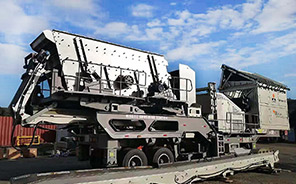The equipment requirements for an aggregate crusher (used in crushing stone, gravel, sand, or other construction materials) depend on the type of material, production capacity, and final product specifications. Below is a breakdown of the key equipment and considerations:
—
 1. Primary Crushing Equipment
1. Primary Crushing Equipment
Used for the first stage of crushing large rocks into smaller pieces.
– Jaw Crusher: Best for hard, abrasive materials (e.g., granite, basalt).
– Gyratory Crusher: High-capacity primary crushing for large quarries.
– Impact Crusher (Primary): Suitable for softer materials like limestone.
Key Features Needed:
– High feed opening capacity.
– Robust construction for durability.
– Adjustable discharge settings.
—
2. Secondary & Tertiary Crushing Equipment
Used to further reduce material size and shape aggregates.
– Cone Crusher: Ideal for fine crushing (produces uniform cubical aggregates).
– Impact Crusher (Secondary): Good for softer materials and shaping aggregates.
– Vertical Shaft Impact (VSI) Crusher: Produces high-quality sand and fine aggregates.
Key Features Needed:
– Closed-circuit design for recirculation.
– Adjustable speed and crushing chamber settings.
—
3. Screening Equipment
Separates crushed material into different sizes.
– Vibrating Screens: Multiple decks for grading aggregates (e.g., 0–5mm, 5–20mm).
– Scalping Screens: Removes oversized material before crushing.
Key Features Needed:
– High screening efficiency with minimal clogging.
– Replaceable screen meshes for different sizes.
—
4. Conveying & Feeding Systems
Transports material between crushers and screens.
– Belt Conveyors: Heavy-duty rubber belts for moving bulk material.
– Apron Feeders: Handles large, abrasive rocks in primary crushing.
Key Features Nee :
:
– Adjustable speed control.
– Dust suppression systems.
—
5. Auxiliary Equipment
Enhances efficiency and safety.
– Dust Suppression System: Reduces airborne particles (water sprays or mist systems).
– Magnetic Separator: Removes metal contaminants from feed material.
– Control Panel & Automation: Monitors production and adjusts settings remotely.
—
6. Power & Mobility Requirements
– Station




